© 2019 Derek Samaras
© 2019 The Urantia Book Fellowship
The ancestors of the Japanese people were not driven off the mainland until 12,000 B.C., when they were dislodged by a powerful southern-coastwise thrust of the northern Chinese tribes. [UB 79:6.3]
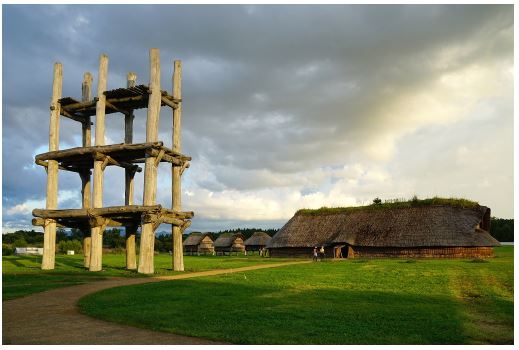
The end of the Ice Age coincided with the closure of the Paleolithic era, when stone tools were used as main instruments, and when the Jōmon period began in ancient Japan approximately 12,000 B.C. The prehistoric culture that flourished at that time and later amalgamated into the modern Japanese people is called the Jōmon culture. The term Jōmon means “rope-patterned” in Japanese, describing the patterns that are pressed into the clay by the artists of that era. The Jōmon period is generally identified with hunting and gathering ways of life, especially the intense utilization of marine resources in shellfish collecting and deep-sea fishing.
Jōmon means “rope-patterned” referring to the pottery.
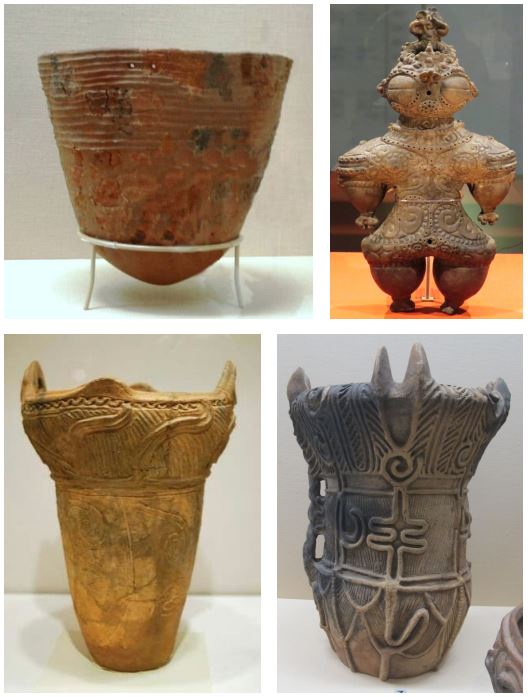
The Jōmon period is divided into six sub- periods. Some scholars disagree about the exact dates for each period. The sub-periods are:
- Incipient Jōmon 13000-8000 B.C.E. or 11000 - 7500 B.C.E
- Earliest (Initial) Jōmon 8000-5000 B.C.E. or 7500 – 4000 B.C.E
- Early Jōmon 5000-2500 B.C.E. or 4000 – 3000 B.C.E
- Middle Jōmon 2500-1500 B.C.E. or 3000 - 2000 B.C.E
- Late Jōmon 1500-1000 B.C.E. or 2000 – 1000 B.C.E
- Final (Latest) Jōmon 1000-300 B.C.E. or 1000 – 500 B.C.E
About fifteen thousand years ago the Andites, in considerable numbers, were traversing the pass of Ti Tao and spreading out over the upper valley of the Yellow River among the Chinese settlements of Kansu. Presently they penetrated eastward to Honan, where the most progressive settlements were situated. This infiltration from the west was about half Andonite and half Andite. [UB 79:7.1]
The Jōmon Culture has been determined to be the ancestors of the modern Japanese people. They moved off the mainland of Asia as the Northern Chinese migrated south, bringing with them new forms of manufacture, art, and agriculture. The Jōmon Culture was not Andite. They portrayed characteristics more of a Red, Yellow, or Andonic culture, as seen in their animal worship, shelter development and genetic makeup. However, there is apparent Andite influence in the “Middle” to “Late” Jōmon periods, as reflected in the advancements in agriculture, shelter building and pottery. Numerous archaeological sites with artifacts of this Neolithic culture have been discovered, from the northern island of Hokkaido to the southern Ryukyus. The Hokkaido region is highly interesting due to the many ancient sites located there, as well as being the home of the modern-day descendants of the Jōmon people. They are called “Ainu.”
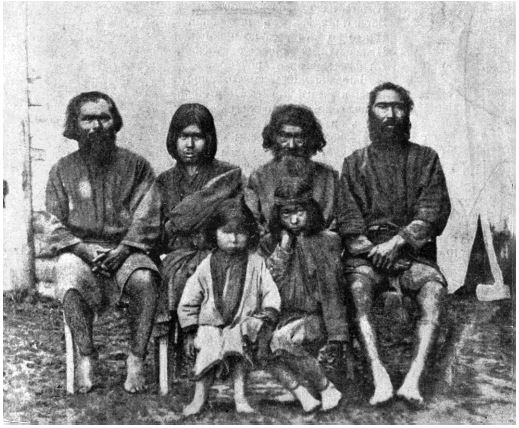
¶ Andite Influence?
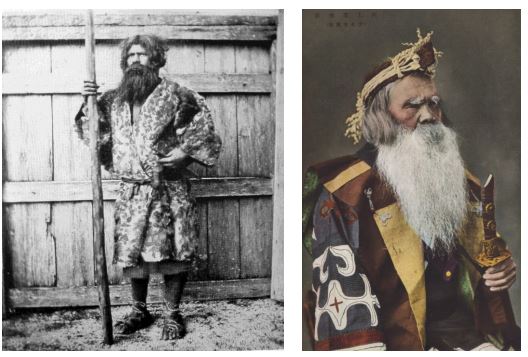
These Andites were the so-called Dravidian and later Aryan conquerors of India; and their presence in central Asia greatly upstepped the ancestors of the Turanians. Many of this race journeyed to China by way of both Sinkiang and Tibet and added desirable qualities to the later Chinese stocks. From time to time small groups made their way into Japan, Formosa, the East Indies, and southern China, though very few entered southern China by the coastal route. [UB 78:5.6]
The Urantia Book speaks of the subsequent improvements in many cultures from the Middle East to Europe, Asia, and into South America as a result of the Andite migrations pouring out of Mesopotamia and adjacent regions. One can’t help but wonder when and where the Andites left their mark in Japan?
The Middle to Late Jōmon period marks an interesting evolution of Jōmon art, agriculture, and religious practices. Perhaps the most intriguing advancements and possible result of Andite influence was found in the art and shelter design. During this period, the artists started creating the Dogu statues. These statues are a major evolution in figurine design in the Jōmon culture.
Most historical professionals seem to agree that the Dogu statues represent fertility worship within their culture. Fertility worship usually coincides with sun worship, and in some cases represents the evolution of culture from stone age to bronze age. The existence of sun worship can easily be seen among the many stone circle formations scattered about Japan.
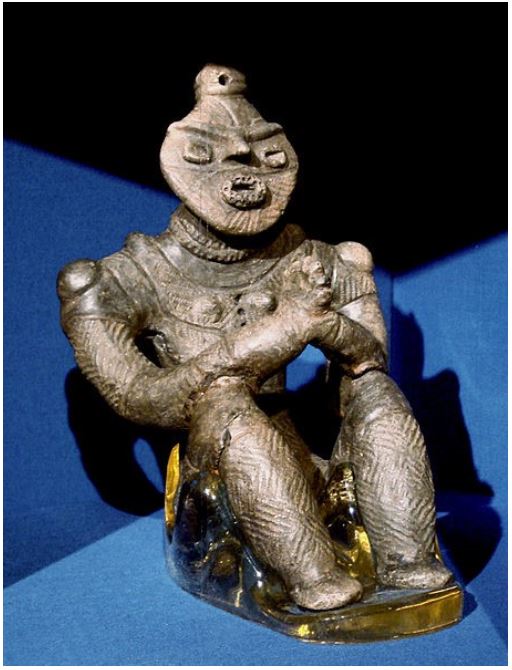
These were the times of the New Stone Age overlapping the oncoming Bronze Age. In Scandinavia it was the Bronze Age associated with mother worship. In southern France and Spain it was the New Stone Age associated with sun worship. This was the time of the building of the circular and roofless sun temples. (3000 B.C.) [UB 80:9.13]
¶ Kazuno, Japan: Ōyu Stone Circles (2000 B.C.-1500 B.C.)
The Urantia Book tells us that the majority of Adamic and Andite migrations from Mesopotamia went into northern Europe, and by 3000 B.C. they were diluted in culture to the point of fertility and sun worship. This is a retrogression from Edenic culture but still gives us insight into where Garden culture made its influences. Who else would bring these advancements to a new land than the Andites?
In Northern Japan we see similar stone circles and bronze figurines of Godlike creatures around 2000 - 1500 B.C. An interesting note is that certain pre-Incan statues in South America seem to slightly resemble some Dogu statues. Might these be the fleeting impressions left behind by the 132 Andite sailors that departed from the coast of Japan, island hopping along the way to Peru, and became the predecessors the Inca?
One hundred and thirty-two of this race, embarking in a fleet of small boats from Japan, eventually reached South America and by intermarriage with the natives of the Andes established the ancestry of the later rulers of the Incas. They crossed the Pacific by easy stages, tarrying on the many islands they found along the way. The islands of the Polynesian group were both more numerous and larger then than now, and these Andite sailors, together with some who followed them, biologically modified the native groups in transit. Many flourishing centers of civilization grew up on these now submerged lands as a result of Andite penetration. Easter Island was long a religious and administrative center of one of these lost groups. But of the Andites who navigated the Pacific of long ago none but the one hundred and thirty-two ever reached the mainland of the Americas. [UB 78:5.7]
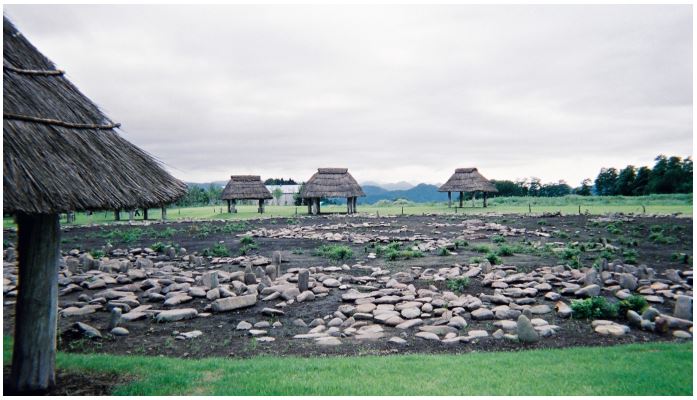
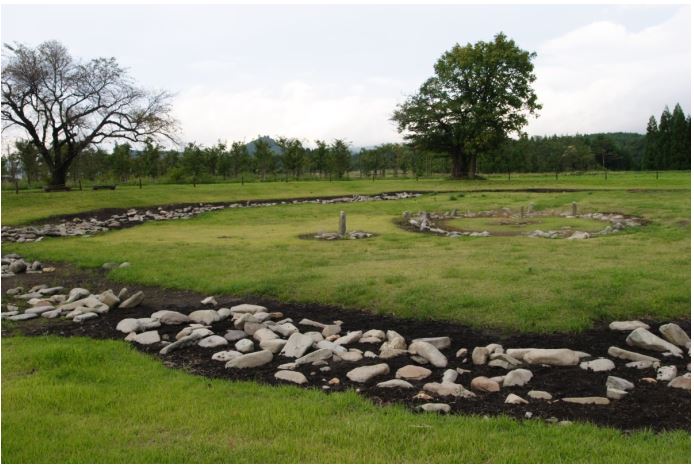
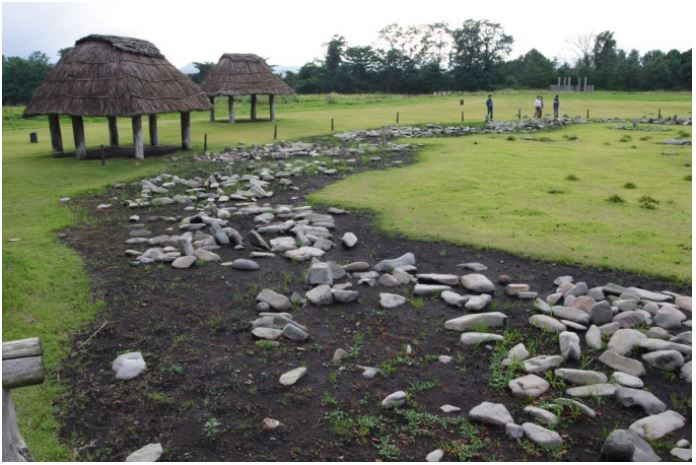
Until modern academia catches up to revelation, we might have to wait a long time until academic professionals can piece together the Andite migration across the Pacific Ocean and into south America. For now, we can only speculate as to what specific influences were left behind by the advanced culture of the Andites. Advancements in agriculture, pottery, art, and religion usually represent some Andite influence. Similar symbols shared by many cultures throughout the world in ancient times seem to reflect Garden culture knowledge. The spiral has been seen from Europe to Japan and into Peru, perhaps representing the irrigation channels of the Garden of Eden.
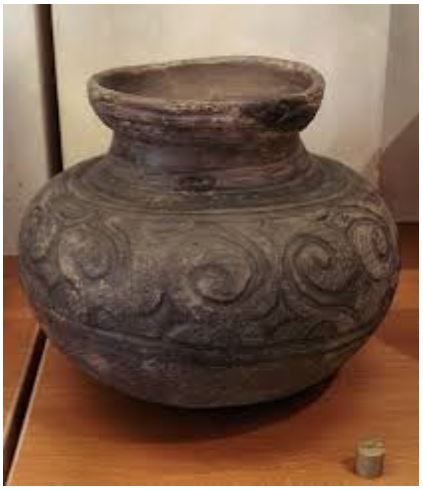
As for the Jōmon Culture, I feel modern academia has correctly proven the statement The Urantia Book makes when it says:
The ancestors of the Japanese people were not driven off the mainland until 12,000 B.C., when they were dislodged by a powerful southern-coastwise thrust of the northern Chinese tribes. [UB 79:6.3]
We can see who these people were, and more importantly we can see how the Jōmon people were the recipients of gradual cultural improvement from what influence they did receive from Andite culture as they migrated and homogenized with the surrounding tribes. Japan has a fascinating history and knowing the intricacies of the ancient foundations that culminated in modern day Japan has only revealed even greater depth and wisdom embedded in the Japanese culture. From 12,000 B.C. to A.D. 2017 real culture in Japan was brought by the Jōmon people and advanced by the Andite influences through China and into Japan. There are still many mysteries left unsolved regarding the migration of the Andites through Japan, but their mark was left and now Japan and the rest of the world are better because of it.
Derek Samaras is Urantia Book Fellowship Director’s Assistant & International Committee Chair.
Chicago Native, now living in Lafayette, CO. Derek is a 38-year-old Filmmaker and Youth Minister, with a degree in Broadcast Journalism/Psychology from the University of New Mexico. He is an advocate for socially sustainable practices that reflect the life affirming qualities revealed in respectful, tolerant, and compassionate fellowship. Derek applied these practices for many years while teaching self-defense in Chicago to women and youth in troubled areas. Derek has been an ambassador for truth, beauty and goodness in multiple continents. He continues to share the message to all who will come and listen: “We are all family; we may never look, act, or think alike, but spiritually we are, and that is what unites us, we are truly one family united in spirit.” Derek has developed his social ministry on the principles of loving service, mindful compassion, and spirit unity: “We are all loved equally by Divinity, freely we have received this love, we must share it freely.” You can catch Derek Live on Saturdays as he hosts the radio show “The Cosmic Citizen” on blog talk radio.
Recent projects: •Directing/Writing/Editing a documentary on the commercial sexual exploitation of children •Committee Chair of the Youth & Young Adults (youth ministry and leadership development) •Assistant Director of The Urantia Book Fellowship (nonprofit spiritual) •Current radio host for “The Cosmic Citizen” •Urantia Book vs. Ancient Aliens (public presentation Los Angeles)
¶ References
- Article obtained from The Fellowship site